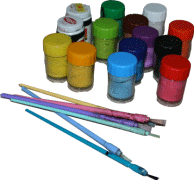Math Auto Correct-- tool that
transforms certain text codes into math symbol
pg.73
Mini Toolbar-- floating toolbar
with commonly used font commands that appears when text is selected
pg.67
Plain text-- text with no
formatting pg.29
Print Layout-- view of a document
that shows the page as it would appear printed
pg.146
Quick Parts (see also Building
Blocks)-- premade content available to add to a document
pg.180
Ribbon-- commands arranged in
tabs of functions that work together. The new display of menu commands for
Office 2007 and 2010 pg.45
Rich text-- text with simple
formatting such as font size, alignment, color and application of bold or
underlined pg.38
Right-click-- using the right mouse
button to access the options menu pg.71
Shape-- a text box with custom
formatting. Shapes are modified with the Drawing Tools
pg.115
Side bar-- Text box along the edge
of the document, separate from the document contents
pg.169
SmartArt-- editable graphics,
charts and diagrams pg.134
Spell checker-- tool to check for
misspelled words in a document pg.70
Styles--collection of preset
formatting to be applied to text or objects. pg.133
Symbol (Insert)-- command to insert
special characters, including math symbols, Greek letters, and other items
from the Symbol collection pg.75
